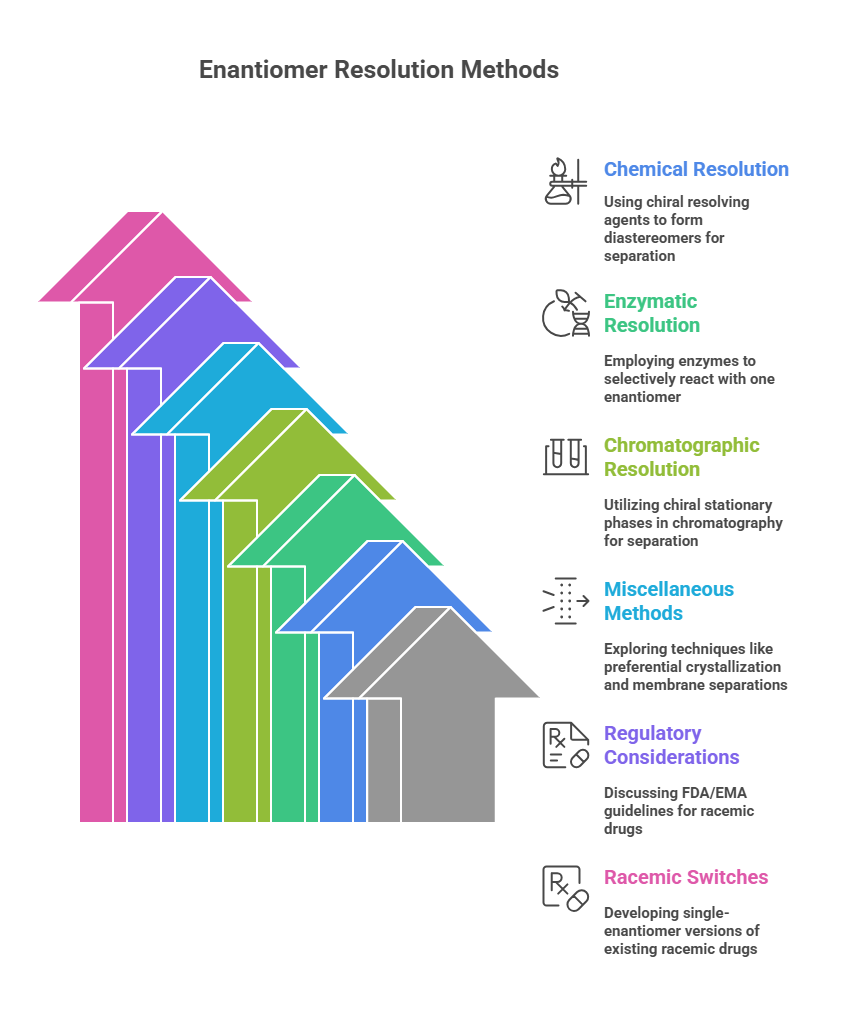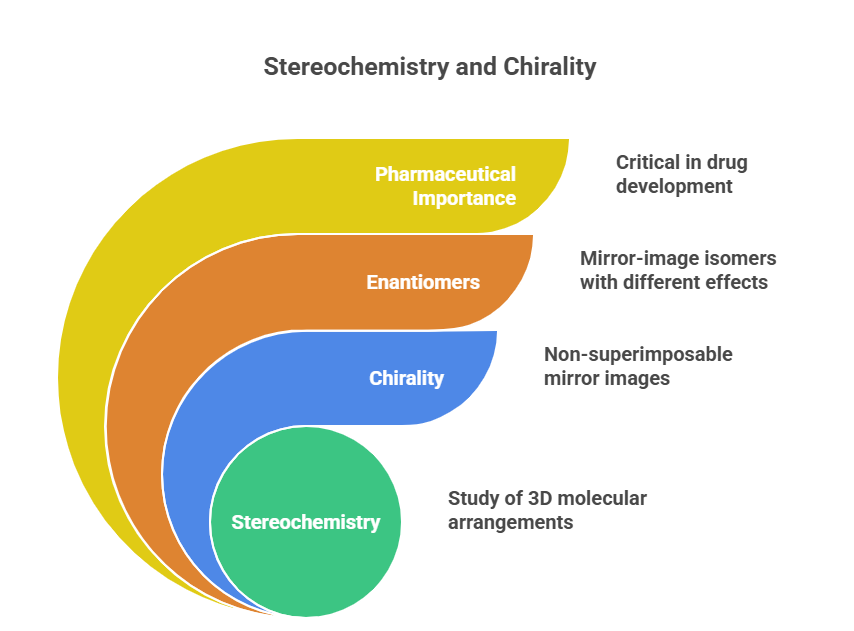Part 6: Resolution of Enantiomers
“Separating the inseparable: how chemists resolve mirror-image molecules.” Introduction Despite advances in asymmetric synthesis (Part 5), sometimes we still end up with a racemic mixture of enantiomers. When direct stereoselective routes are impractical, chemists must separate the enantiomers – a process known as resolution. This part examines classical and modern methods for resolving enantiomers, their pros and cons, and how they are applied in pharmaceutical contexts. We will cover: We’ll also discuss the racemic mixture …









